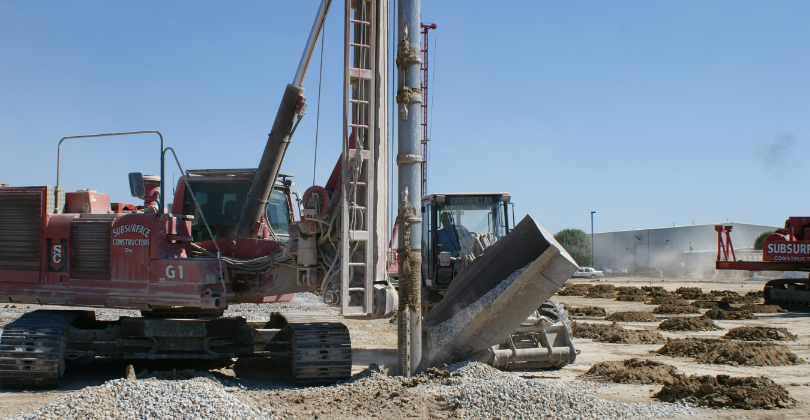Whether it’s a new building, a storage tank, a retaining wall or some other structure, a stable foundation is at the core of every successful construction project. But most construction sites fail to start on a firm footing. Often, some sort of ground improvement or deep foundation is necessary to get a project out of the ground and moving forward.
When considering a new construction project, the nuances of ground improvement, particularly those of aggregate piers, are primary considerations.
Ground improvement is typically defined as using mechanical means to improve the ground’s ability to support a structure, and this technique has begun to grow in use over the years. Stretching back more than a decade, aggregate piers have become a popular construction technique in the U.S. But they’re still a relatively new option to consider. So engineers, contractors and owners often don’t have a full understanding of how their project can be designed, bid and built to best use aggregate pier ground improvement.

There are three primary options that geotechnical engineers consider when making recommendations for building on native and fill soils that are soft or loose:
- Removing the soil and replacing it with engineered fill
- Using deep foundations, such as drilled shafts, auger cast piles or micropiles
- Using ground improvement, such as aggregate piers or rigid inclusions, to improve the bearing pressure to support shallow foundations
Ground improvement is often the most economical and efficient of the three options listed above, assuming the soil conditions and structural loads are suited for it. Even in the worst ground conditions, ground improvement can almost always make a substantial impact on the footing of your project.
The above is an excerpt from our white paper: Desktop guide to aggregate pier ground improvement.


